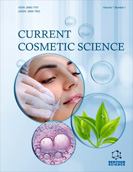Abstract
The basic principles of photodynamic therapy include the use of a photosensitizing agent and the subsequent irradiation with a light source. Because of the skin accessibility to light sources, a great deal of research has been focused on the various light sources and lasers used to get an improvement in different skin diseases. In Europe, the most used combination in photodynamic therapy is the utilization of methyl ester of 5-aminolevulinic acid (commercialized as Metvix®) and best utilized with a red light source at 630 nm. In most European countries, New Zealand and Australia, Metvix® cream is approved for the treatment of basal cell carcinoma, non-hyperkeratotic actinic keratosis (Aks) of the face and scalp and Bowen disease in combination with red light. Photodynamic therapy is being used more and more in a huge number of dermatological and non-dermatological diseases, apart from its approved indications. One of the most promising indications in the future is its use in the management of viral warts with a reasonable cosmetic result due to the fact that this is an entity very difficult to treat. Other current targets of photodynamic therapy are acne, psoriasis, squamous cell carcinoma or even melanoma or mycosis fungoides. A very promising indication in the future could be the prevention of the onset of pre-malignant (actinic keratosis) or malignant (squamous cell carcinoma) lesions, as photodynamic therapy has an action in non-visible lesions. Photodynamic therapy has been used as well, occasionally with good results, in cutaneous photorejuvenation because this technique usually improves characteristics as hyperpigmentation, fine lines or roughness.
Keywords: Photodynamic therapy, phototherapy, analytical, diagnostic and therapeutical techniques and equipment category, antineoplastic agents, administration, cutaneous, skin diseases, skin, light source, 5-aminolevulinic acid, dermatological diseases, actinic keratosis, basal cell carcinoma, photo-oxidation, photosensitizing agent, methyl ester of aminolevulinic acid, oxygen, protoporphyrin IX, bowen disease, photorejuvenation, erythema, pain.

















